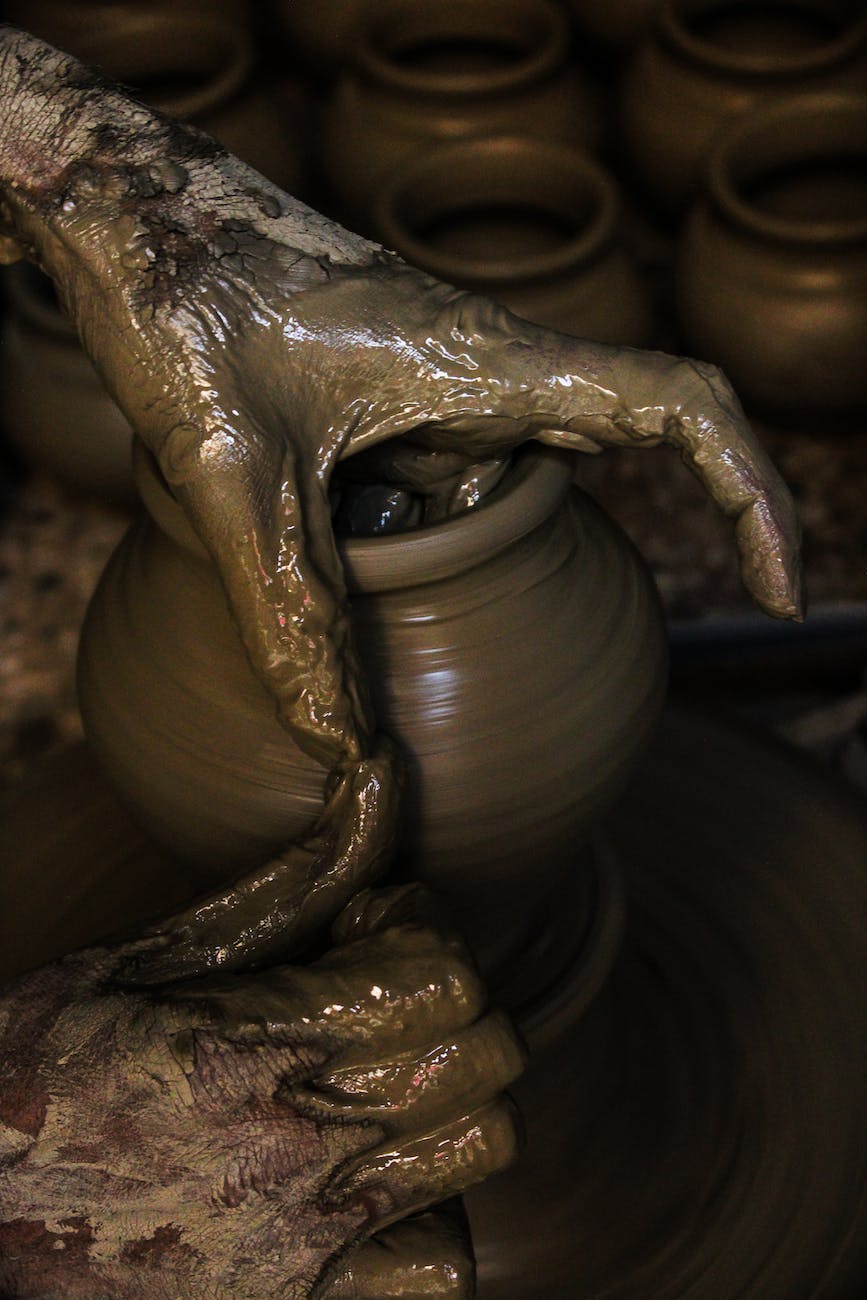Leveling Up Your Pottery Craft: Pro Tips for Optimizing Technique
While foundation skills provide the base, master ceramic artists employ nuanced tricks over years perfecting their craft. Small refinements and adjustments make enormous differences in control and outcomes once fundamentals are solid. Heeding advice from seasoned potters helps intermediate learners advance their wheelwork, sculpting, glazing, and conceptual skills exponentially.
Centering with Sensitivity not Force
Though brute strength muscles clay into axis, finesse centers better. Avoid compressing too harshly. Let clay soften before gently reforming into a dome. Sense its receptivity before reforming. Adding water a drop at a time enhances plasticity for flexibility. Be mindful to help the clay center itself through your guidance, not imposition.
Opening Clay with Even Pressure
Press a cupped hand’s base firmly to stabilize walls when opening clay into cylinders using thumbs. But avoid localized pressure points that thin certain areas. Distribute force evenly as you elongate downward to maintain uniform floor thickness. Support the inside continuously as walls drop. Gentle perseverance prevents collapse.
Pulling Walls Up through Compression
Clay walls rise when thumbs press clay outward against the palms placed above on the exterior. But friction heats and weakens surfaces. Instead, compress rims between fingers before each lift to condense clay for stability. Lubricate with slip if needed. Lift before compressing again. This slide resistance opens walls smoothly.
Refining Foot Rings with Finesse
Sharp tools gouge ankles when trimming foot rings. Avoid digs by bracing interior walls with a knuckle while smoothing the exterior base steadily outwards. Make final razor-thin cuts delicately with the wheel’s momentum. Then compress and taper the foot using felt soft rib tools to finish professionally.
Contouring Precision Handles and Spouts
Mold wide tapered handles and curved spouts around dowels to achieve crisp edges and avoid sagging. Use rib tools to define angles and symmetric contours. Taper joining points to integrate components seamlessly into overall forms. Any appendages need deliberate shaping for clean uniformity.
Mixing Slips and Engobes to Purpose
Like bespoke clay, fine tune casting slips and decorative engobes to intended uses. Monitoring viscosity ensures proper adhesion for joining and coating. Test compatibility and firing outcomes through samples before committing with whole pieces. Master slip recipes tailored for goals like crackle effects or specific color saturation.
Developing Brilliant Color Reliably
Vibrancy and consistency in glaze color comes from precise control of chemistry. Keep detailed firing logs to reproduce effects accurately by recording time, temperatures, kiln placement, and atmospheres used to create stunning results. Test tiles with thin glaze layers help gauge activation of certain pigments and fluxes at different heats. Eliminate guessing through meticulous documentation.
Harnessing Happenstance through Iteration
Rather than flaws, prize the happy surprises arising from iterative experimental practice. Note and recreate cracking effects. Incorporate warped slumping into forms. Develop new layered glazes based on blemishes. Embrace unintended beauty through refinement into features. Building iterations allows maximizing the creative potential in chance occurrences.
Sketching to Visualize Finished Works
Draw future pots and art pieces to clarify mental maps for completion. Add dimensions, profiles, sections, decorative markings, firing notes – whatever communicates the vision fully. Detailed sketches prevent vague abstractions by grounding concepts into tangible plans. They also help identify technical challenges early before confronting them in costly clay.
Learning from Masters Past and Present
Through exposure to heritage techniques and contemporary innovations by researching exemplary works, inspiration flows just as from nature or dreams. Honoring creative lineages through knowledge connects us to the timeless creative spirit spanning generations. Wisdom gets refracted into new brilliance when adapted through personal perspectives.
